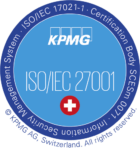Digital signatures in the public sector: why the switch is worth it.
How digital signatures streamline administrative processes, making them faster and more cost-effective.
The digital transformation has reached the public sector as well – but new technologies are often only widely adopted once their benefits are clearly proven. A prime example of this is the digital signature. A simple comparison chart makes it clear: digital signatures are more cost-effective, faster, and more efficient than handwritten ones. But where do these figures come from?

Real-world assumptions from public administration
For our comparison, we rely on concrete assumptions that reflect everyday work in the public sector. We base our model on a straightforward signature process involving an external party invited to sign. The calculation is based on the median gross salary of an employee in Switzerland: according to the Federal Statistical Office, this was CHF 7,092 per month in 2024. Given a 42-hour workweek and including additional employer costs, this corresponds to a per-minute rate of approximately CHF 0.84 – for simplicity, we use CHF 0.80 per minute in our calculations.
| Handwritten signature | Digital signature | |
| Cost per document | CHF 10.00 – 14.00 | CHF 2.00 – 5.00 |
| Time required | 10 – 15 minutes | Less than 5 minutes |
| Postage | Yes | No |
| Document storage | Physical / Digital | Digital |
| Process | Media discontinuities | End-to-end digital |
The handwritten signature process
In practice, a handwritten signature involves several steps – it’s not just about signing the document. We’ve based our calculation on the following steps and time estimates:
| Printing the document | 1 min |
| Preparing and sending it to the recipient | 3 min |
| Reviewing and scanning the document | 3 min |
| Archiving (physical or digital) | 3 min |
| Total time | 10 min, which equates to labour costs of CHF 8.00 |
| In addition: | |
| Printing costs | CHF 0.30 |
| Postage costs (round trip) | CHF 2.40 |
| Total cost per document with handwritten signature | CHF 10.70 |
The digital process: Fast, simple, cost-effective
In contrast, digital signatures – specifically qualified electronic signatures (QES) – are largely automated and fully digital:
| Required time | 2 min, which equates to labour costs of CHF 1.60 |
| Cost of the QES | CHF 1.10 – 1.80 |
| Total cost | CHF 3.00 |
What does this mean for the public sector?
The savings are significant: CHF 7.70 per document, along with simpler processes. Given the volume of documents signed annually in public administration, this presents huge potential:
- Reduced administrative workload
- Shorter processing times
- Fewer media disruptions
- Improved traceability and archiving
Conclusion
Introducing digital signatures in the public sector is not a project for the future – it’s an economically sound decision that already delivers measurable benefits today. The simple calculation shows: going digital is not just more modern – it’s clearly more efficient.

